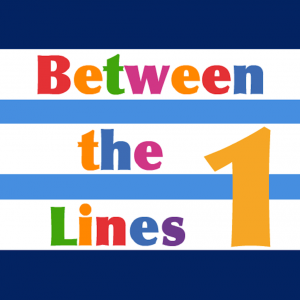 It’s on the tip of my tongue! How many times have you used this expression or heard it from other people. Oftentimes when we think of word-finding deficits we automatically think of it as an adult affliction, however, you would be surprised how many children including even very young children (4+ years of age) are affected by it. Did you know that “up to 7% of children have specific language needs and around 25% of children attending language support services have word-finding difficulties (WFD; Dockrell et al., 1998)?”
It’s on the tip of my tongue! How many times have you used this expression or heard it from other people. Oftentimes when we think of word-finding deficits we automatically think of it as an adult affliction, however, you would be surprised how many children including even very young children (4+ years of age) are affected by it. Did you know that “up to 7% of children have specific language needs and around 25% of children attending language support services have word-finding difficulties (WFD; Dockrell et al., 1998)?”
If you participate in various speech language and education related forums you may frequently see a variation on this question: “How would you assess and treat a child with word finding difficulties?” Before I provide some recommendations on this matter I’d like to talk a little bit about what word-finding is as well as what impact untreated word finding issues may have in a child.
So how do word-finding deficits manifest in children? In a vast variety of ways actually! For starters they could occur at the word level, conversational level or both. Below are just a few examples of word-level errors from German, 2005:
- Error Pattern 1- Lemma Related Semantic Errors
- “Slips of the tongue” or semantic word substitutions such as fox→ wolf; clown → gnome
- Error Pattern 2 – Form Related Blocked Errors
- “Tips of the tongue” or responses characterized by word blocks, pauses, fillers (um, ah, etc), repetitions, metalinguistic or metacognitive comments such as “I know”, “I don’t know”, etc.
- Error Pattern 3 – Form & Segment Related Phonologic Errors
- “Twists of the tongue” which include phoneme omissions, substitutions and additions such as cactus → catus; octopus →opotus, etc.
Further complicating the above may be the speed (some delay or no delay) with which they retrieve words as well as accuracy/inaccuracy of their retrieval once the words are retrieved. Additionally, a number of secondary characteristics may also play a role which include gestures (e.g, miming a word, frustration, etc) as well as extra verbalizations (metalinguistic and metacognitive comments).
At discourse level, students with word-finding deficits typically occupy one of two categories: productive vs. insufficiently productive language users. While their narrative language profile may be marked by frequent pauses, word fillers, as well as word and phrase revisions and repetitions.
Moreover, word-retrieval deficits are not limited to discourse, they are also found in reading tasks. There word-finding issues may manifest as omitted words or almost stuttering/cluttering like behaviors. Interestingly German and Newman (2005; 2007) found that students with word retrieval difficulties are able to successfully correctly identify the words they missed during oral reading tasks in silent reading recognition tasks.
Difficulty coherently expressing oneself can have significant detrimental effect on the child’s academic performance, social relationships and ultimately self-esteem, which without appropriate intervention may potentially lead to poor school performance as well as mental issues (e.g., anxiety, depression, etc.)
So how can word-finding deficits be assessed for free? You can assess word-finding at narrative level using the clinical narrative assessment.
At word level you can adapt single word standardazed tests such as the Expressive One Word Picture Vocabulary Test (EOWPVT) in order to test the efficiency of the student’s word retrieval in single word context. Here, the goal is not necessarily to test their expressive vocabulary knowledge but rather to see what type of word finding errors the students are making as they are attempting to correctly recall the visually shown word. Depending on the extent of the child’s word finding deficits you may have some very useful information to derive from the presentation of this test.
To illustrate, I recently informally administered applicable portions of this test to a four-year old Russian speaking preschooler. Based on his performance I was able to determine that his errors are primarily Error Pattern 3 – Form & Segment Related Phonologic Errors or Twists of the tongue”. This was further confirmed when I had the child to participate in the narrative retelling task.
So where can we find reputable evidence-based practice information on effective assessment and treatment strategies for word finding deficits? Start with Dr. Diane German’s website, entitled Word Finding. She has a lot of good information to offer there for free to both speech language professionals as well as parents. Take a look at her recommended materials and resources, they are very helpful when it comes to assessing and treating children with word finding deficits. Now have fun and evidence-base practice on!
PS. Calculating percentage of word-finding difficulties in children.
Dr. German recommends the following procedure: “Obtain a language sample of 50 T-units (kernel sentence + subordinate clause) in length using stimuli of interest to the learner (or use one you have as long as all utterances in the sample are included). Then asses each T unit for the presence of one or more of the following 7 WF behaviors in discourse: repetitions, revisions (reformulations), substitutions, insertions (comment that reflects on the WF process like I cannot think of it, etc. ), time fillers (um, er, uh), delays with in the T unit, and empty words (thing, stuff). Learners with WF difficulties manifest one or more WF behaviors in 33% or more of their T units (often 40% – 50%). Typical language learners display WF behaviors in 19% or less of their T-Units (German, 1991)“ (German, 2015: SIG 16 Topic: Assessing Word-Finding Skills)
Helpful Related Materials:
- Clinical Assessment of Narratives in Speech Language Pathology
- Narrative Assessments of Preschool, School-Aged, and Adolescent Children
- Narrative Assessment Bundle
- The Checklists Bundle
- Creating Functional Therapy Plan
References:
- Dockrell, J.E., Messer, D., George, R. & Wilson, G. (1998). Notes and Discussion Children with word-finding difficulties-prevalence, presentation and naming problems. International Journal of Language & Communication Disorders, 33 (4), 445-454.
- German, D.J. (2001) It’s on the Tip of My Tongue, Word Finding Strategies to Remember Names and Words You Often Forget. Word Finding Materials, Inc.
- Dr. German’s Word Finding Website: http://www.wordfinding.com/
Disclaimer: The views expressed in this post are the personal opinion of the author. The author is not affiliated with dr. Diane German nor PRO-ED publications in any way and was not provided by them with any complimentary products or compensation for this post.



 Those of you who follow my blog know that I absolutely adore the “Between the Lines” app series by Hamaguchi apps, which focuses on targeting aspects of social language including tone of voice and non-verbal body language, perspective taking as well as idiom interpretation. I have already reviewed
Those of you who follow my blog know that I absolutely adore the “Between the Lines” app series by Hamaguchi apps, which focuses on targeting aspects of social language including tone of voice and non-verbal body language, perspective taking as well as idiom interpretation. I have already reviewed  In today’s guest post, Natalie Romanchukevich advises readers on how to create opportunities to expand children’s spontaneous communication skills.
In today’s guest post, Natalie Romanchukevich advises readers on how to create opportunities to expand children’s spontaneous communication skills.





 It’s DAY 25 of my Birthday Month Giveaways and I am raffling off a giveaway by
It’s DAY 25 of my Birthday Month Giveaways and I am raffling off a giveaway by  It’s DAY 20 of my Birthday Month Giveaways and I am raffling off a giveaway by
It’s DAY 20 of my Birthday Month Giveaways and I am raffling off a giveaway by 